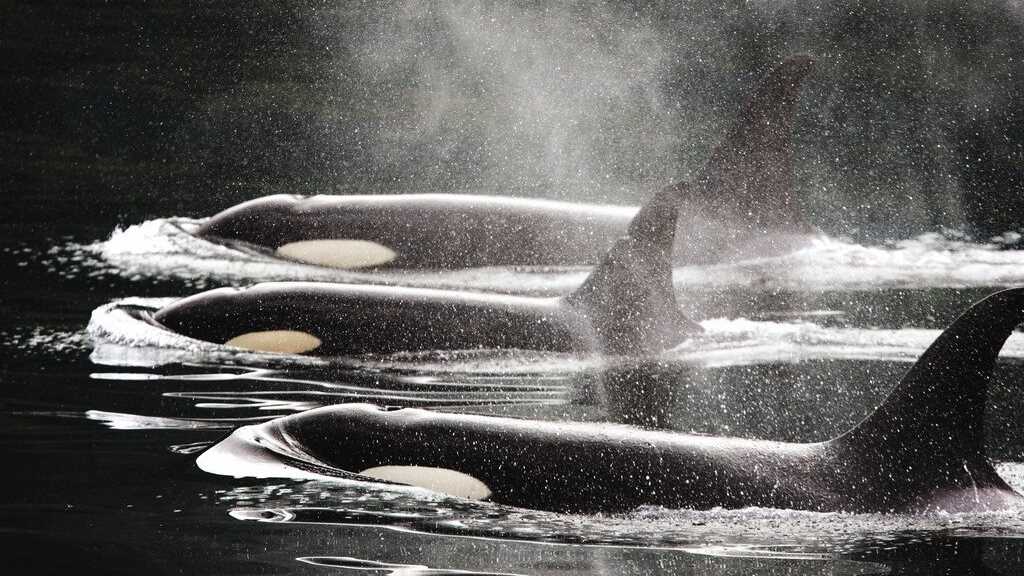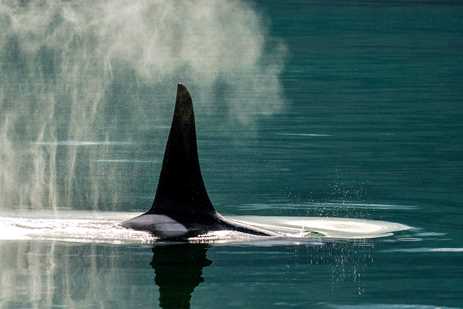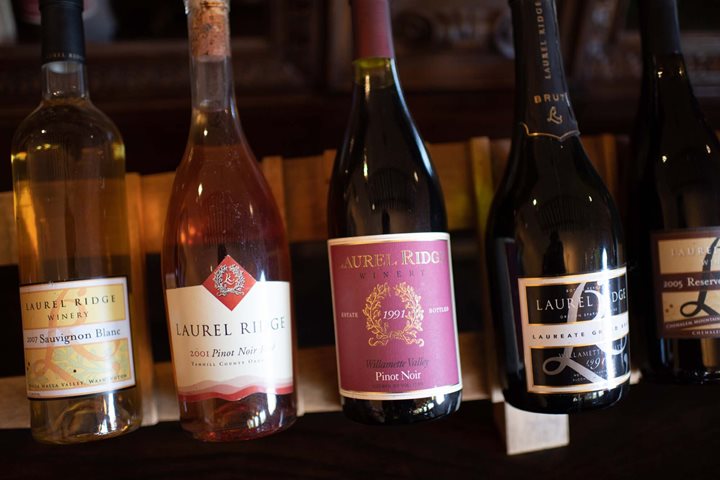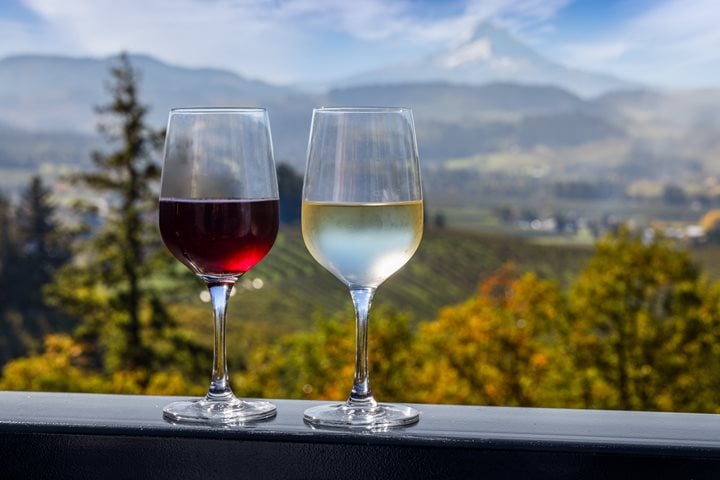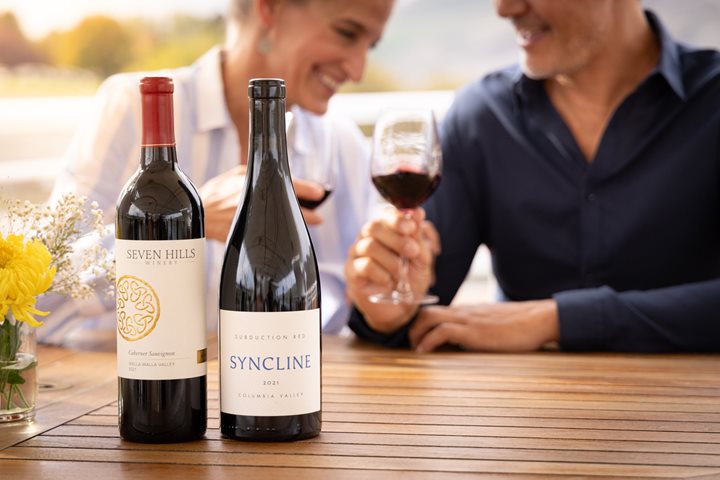On Exploring British Columbia and the San Juan Islands, travelers get a chance to explore some of the rugged coastal beauty of the Pacific Northwest and enjoy the wildlife that frequents the area. With luck, in the Gulf Islands of Canada they will spot the highly anticipated, but often elusive, killer whale. Through a unique partnership with the Center for Whale Research, guests of National Geographic-Lindblad Expeditions will have an opportunity to speak to the researchers who know these mammals best. Here, Dr. Michael Weiss, the Center's research director, weighs in on orcas, the latest scientific discoveries in the field, and what travelers can expect when rubbing shoulders with the Center’s scientists.
Get Inspired by Photos, Videos, Webinars, Stories, and Exclusive Offers.
Sign Up
What are the different kinds of killer whales?
Killer whales are broken up into what we call ecotypes. Each of these types look different, they live in different places, and they eat different things. We think there are probably more than 10 types of killer whales in the world, but in the Pacific Northwest we have three: residents; Bigg’s, which used to be called transient killer whales; and offshores, which, as the name suggests, are found way offshore. Each ecotype will have at least one distinct population. When we talk about the Southern Residents, a resident is an ecotype of killer whale, and this is the southernmost population of residents.
You use the term killer whale instead of orca—is there a distinction?
Either term is fine to use. Killer whale is the original term, so a lot of old whaling papers just call them “killers.” Orca came into popularity in the 60s and 70s from their scientific name, orcinus orca, especially during the captivity boom as people were like, "these whales aren’t going to kill you." I use killer whale for two reasons: One, it's just how you refer to them in the scientific literature because that's their accepted common name. But also, I think their position as top predators is one of the more interesting things about them. They are whales that are very good at killing a lot of different things and I don't think there's anything incorrect in calling them killer whales.
What makes the orcas in this particular area so unique?
The Southern Residents are extremely special. They’re culturally, behaviorally, and ecologically completely distinct from any other killer whale population in the world. They don’t migrate out of the population, they don’t have immigration in from other whales—they’re just their own distinct genetic group, and it’s been that way for thousands of years. They have a unique social structure where both sons and daughters stay with their mom for their entire lives and they have a culturally learned prey preference for Chinook salmon.
Behaviorally, the Southern Residents are the most social, surface-active whales you’ll see anywhere in the world. That means they spend much of their time in big groups, socializing and jumping out of the water and playing, which is really interesting to watch. We’ve had an individual-level study of this group for multiple decades that we don’t have for other killer whales. So we know the Southern Residents better than we know any other killer whales—or any marine mammals for that matter—anywhere in the world.
Why are the Southern Residents so knowable compared to other killer whales?
That largely falls to where they live. They tend to spend a lot of time in these inland waters—rather than out in the open ocean. They’re in the Salish Sea, around the San Juan Islands, Puget Sound, and the Strait of Georgia. So they’re in more accessible, easier to access areas. You could say they are urban whales—they live between Seattle, Victoria, and Vancouver, which is their core summer habitat. That easy access is what initially led them to be targets for marine park captures.
What is it about this particular region that makes it so appealing for these animals?
The Pacific Northwest, especially the Salish Sea, is one of the most productive areas on the planet in terms of biomass. There's plenty of sun, and you get a lot of upwellings—water from the deep ocean full of decaying debris and lots of nutrients gets pushed up to the surface, which means a lot of phytoplankton and other plants in the water. Those are the building blocks of an ecosystem. The places where you see killer whales generally are places with higher productivity all the way down the food chain.
For the Residents, they end up following the salmon. Killer whales eat other predators, like salmon and seals, and those things are drawn to places where there’s more to eat. The salmon go up the rivers to spawn, and they hang out in the Salish Sea because the area has plenty of food for them to bulk up before making a run up the river. The seals and sea lions are there because it’s a good place to rest and find food, whether that’s salmon or other fish. And we also get transient whales that come in following the seals and sea lions. There’s a strong base for the whole ecosystem.
Tell us a little bit about the Center for Whale Research and the work are you doing?
The Center for Whale Research is a nonprofit research organization that's been around for 47 years. Our mission is to conduct scientific studies on marine mammals, and we have three pillars: research, education, and observation. The research side is what I'm mostly involved in, which is going out on a boat and collecting data. Our main project is—and has been for all of those 47 years—a population census of the Southern Resident killer whales. We conduct a census every year and use that data to try and understand what’s driving the survival and reproduction of the population, with a focus on their ecology and social systems. How does losing your mother predict higher mortality? How does having a son around influence females’ reproductive success? On a day-to-day basis, that looks like spending long days on a boat, flying drones and taking photographs, and then even longer days in front of a computer, processing all that data.
Are there any research successes that come to mind for you?
Since 2017, we've made some strides in figuring out the social impacts on survival and reproduction in the Southern Residents. In 2019, we published a paper showing the grandmother effect, which is that these adult whales, when they lose their grandmothers, have higher mortality. It's not just the mothers that are keeping them alive, it's also grandmothers. Looking at the composition of the population over time, there's fewer and fewer of these old females—those marine park captures targeted young whales, so a generation was taken out. Those whales that were young at that time would now be the grandmothers of the population.
We also have a paper that came out that shows females who have sons have lower reproductive success, and that happens through the entire lifespan of the son. They never stop taking care of their sons, and for each additional son, it reduces their reproductive success by about half. The next step is to integrate all of that information into population viability analysis, where we look at what predicts survival and reproduction in the population as a whole. Is it going to grow? Is it going to shrink? What’s the likelihood of extinction in some number of years? We’ve made some good progress identifying those factors in the last few years, and now hopefully we’ll be able to model them further.
How does the Center for Whale Research enhance the experience aboard our voyage in British Columbia?
Either myself or my colleague Dave Ellifrit, who’s been doing field work for 30 years, or sometimes both of us come aboard to give an introductory talk about who we are and what we’re doing. Then we’ll do some activities—last time we went on the Zodiac to see some sea lions—before giving another longer talk, and we sometimes have dinner with the guests after.
Guests can expect a detailed overview of the history of killer whale research. If we have new results that nobody knows about yet, we’ll bring that with us and share the most up-to-date research we have. The best part for me is the questions afterward. We have a lot of theories and stories we may not share in a scientific article or on a television program, but in a smaller, less formal setting, we’re excited to talk about our work. You have a chance to directly interact with scientists, not just in a lecture hall but out in the field, in the whale's world, and you get a lot more out of that than you might from just reading something they wrote.
Main image: Ralph Lee Hopkins

